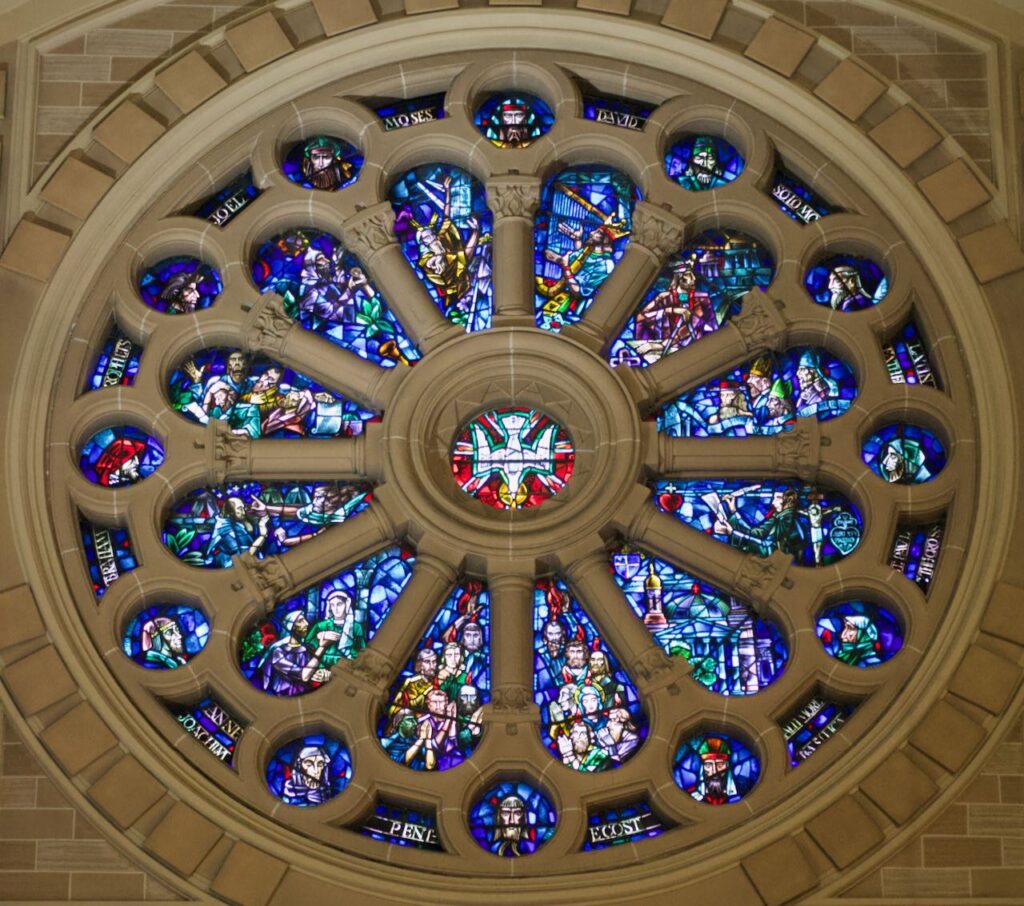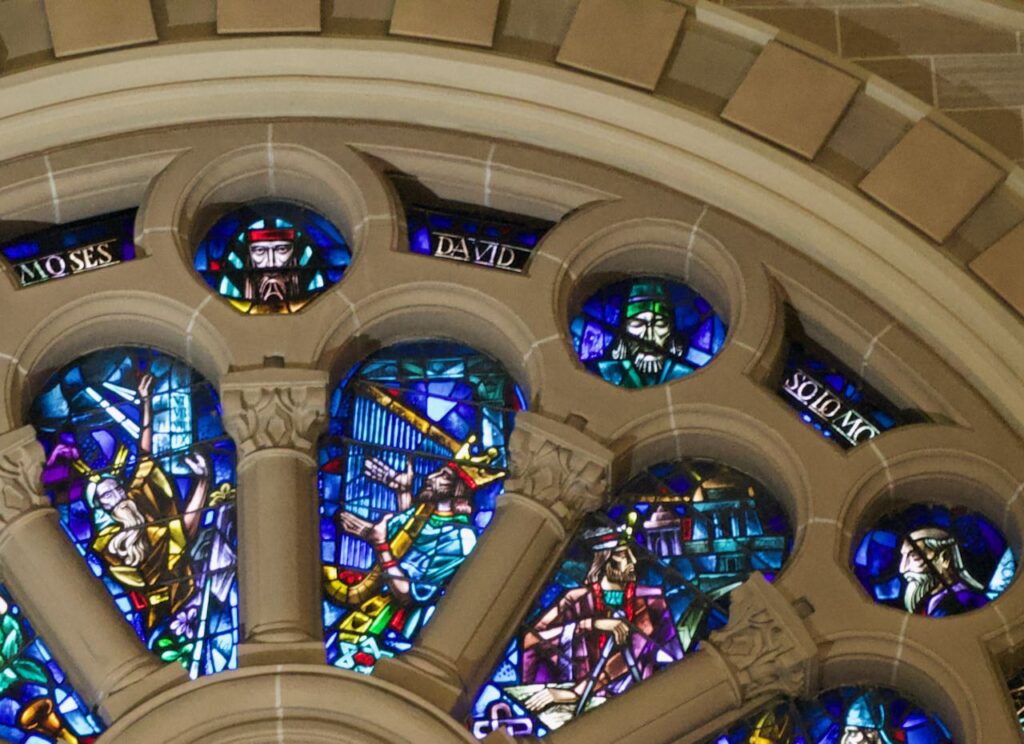
We believe that the Holy Spirit, the third person of the Blessed Trinity, has been active in the world throughout salvation history. This window brings out the connections between the Holy Spirit’s actions in the Old and New Testaments. In the Mass, the Liturgy of the Word includes readings from both.
The teardrop panes depict figures from the Old Testament who specifically connect it with the New Testament; major prophets whose words pointed to Jesus; Pentecost; and figures from the early and modern Church. The twelve small circular panes around the outside represent the minor prophets of the Old Testament. The names of some can be read next to their image. Words from their prophesies are often read at Mass.

The top left pane depicts Moses. This pane unites the Old and New Testament themes of the window. God used Moses to free his people from slavery in Egypt, prefiguring Jesus’ resurrection which frees us from slavery to sin. Moses is holding the stone tablets, the Ten Commandments. Last Sunday we heard Moses speaking to the people about the importance of the Commandments (Dt 6:2-6). We also heard Jesus summarize the Commandments: to love God with your whole being and love your neighbor as yourself. (Mk 12:29-31).
Rays of light shine on the tablets symbolizing that their origin is from God. Rays of light also radiate from Moses’ head for his face was radiant after speaking with God (Ex 34:29). They can also represent the connection of the Commandments with both the Old and New Testaments.1
The purple on the first ray symbolizes royalty and the divine authority of God in the Old Testament. Jesus, the Son of God, embodied this divine authority. The flowering staff in the lower corner of the pane, is the staff of Aaron that sprouted and flowered (Num 17:23).2 Aaron was of the tribe of Levi and the Levites were the high priests offering sacrifice to God. In the New Testament, Jesus is the high priest, offering himself as the ultimate sacrifice for the forgiveness of the sins of all people. This sacrifice is made real for us in the Liturgy of the Eucharist at Mass.
To the right of Moses is David, King of Israel, playing a harp, for he is the author of many of the Psalms, surely inspired by the Holy Spirit. Verses from a Psalm are prayed at every Mass and the Psalms are important in Christian prayer. His attribute, the Star of David, appears in the lower corner of the pane. In the Gospels, Jesus is addressed as “Son of David,” as we hear Bartimaeus call him. (Mk 10:47)
To the right of David is his son, Solomon, who succeeded him to the throne. David had wanted to build a temple for the Lord in Jerusalem, but it was Solomon who built it. In one hand he holds a drafting tool, and his other rests on the drawing. In the background is the Temple that he built. Solomon prayed for Wisdom (1 Kings 3:9), a gift of the Holy Spirit. His attribute is the joined links in the inner corner of the pane, known as Solomon’s knot, symbolizing God’s eternity, unity and protection.
Amos is the minor prophet on the right. The names of the other two cannot be read. All of the prophets spoke the word of God through the inspiration of the Holy Spirit.
As we reflect on these panes may we ask God to make us more aware of the rich connection between the Old and New Testaments and help us understand what He is saying to us through the readings at Mass.
Footnotes:
- Strack, Richard. (2024, March 10). Moses: The Iconography. Christian Iconography. https://www.christianiconography.info/moses.html
- Strack, Richard. (2024, March 10). Aaron: The Iconography. Christian Iconography.
https://www.christianiconography.info/aaron.html